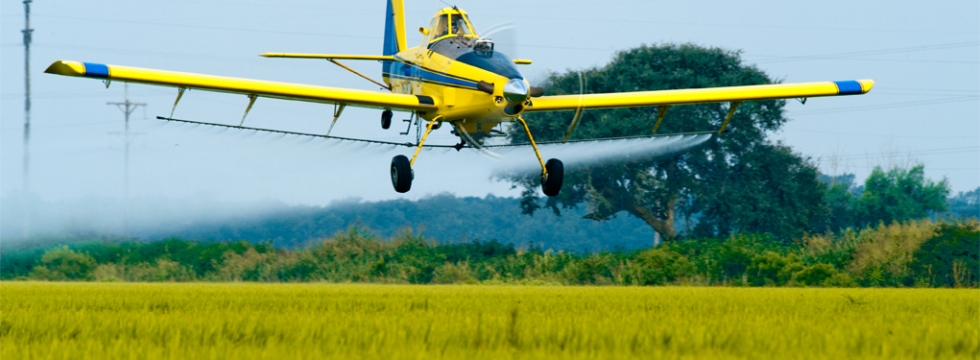Why is it called aerial application?
“Crop dusting” is an outdated term. Today, most applications are in liquid form. Additionally, today’s aerial applicators do much more than control insects, weeds and diseases. They can “plant” seeds from the air, fertilize and add nutrients to the soil, help clean up oil spills in the ocean and harbors – even fight wildfires!
Who Are Agricultural Pilots and What Kind of Aircraft Do They Fly?
Aerial agricultural pilots are highly-trained professionals. Many Ag operations are family businesses that have been at work over 20 years. Operators fly specially designed helicopters and fixed-wing aircraft. All aircraft use sophisticated equipment such as Global Positioning System, flow controls and precisely calibrated spray equipment to ensure accuracy in product application.
What Are the Advantages of Aerial Application and Is It Safe?
When pests or disease threaten a crop, time is critical. Aerial application is often the fastest means of getting the necessary protection products to the affected crop. It can also be the most economical, as less fuel is used. And it can be more environmentally friendly, too, as its use reduces soil erosion by as much as 90 percent, by assisting no-till or minimum till operations which preserve the integrity of the soil. All crop protection products must meet tough safety standards. Once on the market, they are monitored by the EPA, and Food and Drug Administration (FDA). This ensures the safety of the fresh fruits and vegetables we can enjoy year-round.
Our most common crop applications are crop protection for disease and insects, nutrients and seeding. We work with Crop Consultants, Coops, and Farmers.
| ABOUT COVER CROPS | ||
Cover crops protect the soil and may be used to reduce soil erosion, limit nitrogen leaching, suppress weeds, and increase soil organic matter. Small grain cover crops increase surface cover, anchor corn and soybean residues, increase water infiltration, and reduce both rill and interrill erosion.
Interested in learning more about farmers’ opinions regarding cover crops? Learning the environmental benefits of cover crops? Or reading frequently asked questions regarding cover crop best management practices? For articles on those things and more, read about Alternative Agriculture from Iowa State University here →



